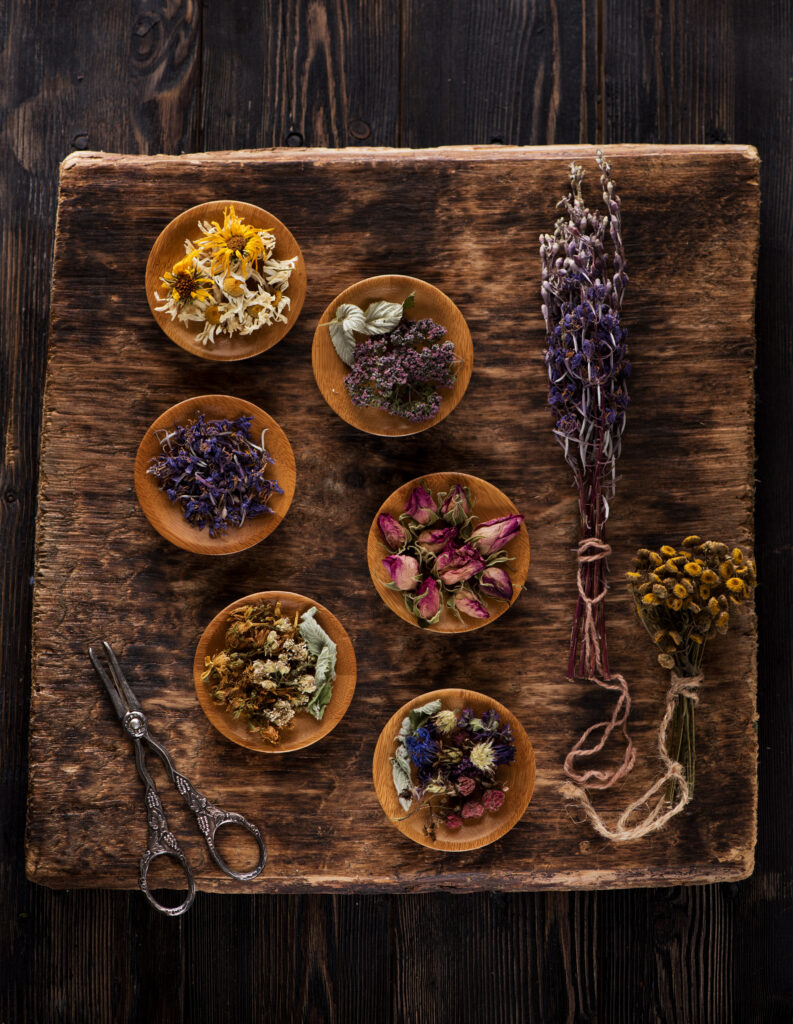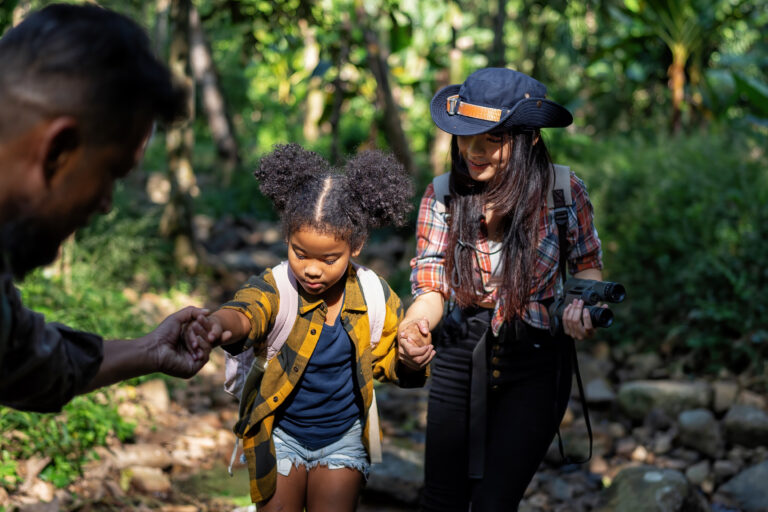In the heart of Appalachia, medicine wasn’t found in a pharmacy — it was found along the creeks, hidden beneath the canopy of ancient trees, and growing wild along the hillsides.
For generations, Appalachian families relied on the wisdom of herbs to heal, protect, and nourish their bodies. This knowledge wasn’t written down in textbooks; it was passed from hand to hand, voice to ear, heart to heart.
A Legacy Rooted in Survival and Cross-Cultural Wisdom
Life in the Appalachian Mountains was rugged, isolated, and often unforgiving.
When the first settlers — largely Scots-Irish, English, German, and African descendants — made their way into the mountains in the 18th century, they brought with them the old-world knowledge of herbs, tonics, and folk healing.
They found themselves in a new and wild land, and survival demanded adaptation.
Here, they encountered Native American tribes like the Cherokee and Shawnee, whose knowledge of the region’s plants ran deeper than any textbook could teach.
Over time, a silent exchange occurred: settlers adopted indigenous practices such as using willow bark for pain relief (the precursor to modern aspirin) and learned the timing of harvests from Native traditions that had been honed over thousands of years.
Thus, Appalachian herbalism became a rich tapestry — an interwoven blend of European, African, and Native American healing traditions, shaped by the land itself.
Common Herbs and Their Healing Powers
Each plant had a story, and each story carried a cure:
- Ginseng (Panax quinquefolius): Known to Native peoples long before European arrival, “sang” became a highly valued trade commodity by the 1800s, with Appalachian hunters exporting it all the way to China.
- Yarrow (Achillea millefolium): Ancient Greeks called it the “herb of Achilles,” and settlers used it much the same way — to stop bleeding and heal wounds.
- Goldenseal (Hydrastis canadensis): A powerful antimicrobial, treasured by Cherokee healers and later widely used by settlers for infections.
- Elderberry (Sambucus canadensis): Used to make syrups and tonics to prevent and treat colds, especially critical during long, isolated Appalachian winters.
- Plantain (Plantago major): Called “white man’s footprint” by Native tribes because it spread wherever settlers went, it was a go-to salve for bites, cuts, and stings.
- Black Cohosh (Actaea racemosa): Used for centuries by the Cherokee and later by Appalachian midwives to aid in women’s reproductive health.
In these mountains, plants were not just ingredients — they were companions in the daily struggle to live.
The Role of Storytelling and Family Tradition
Herbal knowledge wasn’t simply taught; it was woven into the rhythms of everyday life.
Children learned by shadowing their elders, memorizing plants by sight, season, and scent. Storytelling played a key role: A grandmother might warn, “Pick ginseng only after the third red berry drops — else you’ll anger the spirit of the woods.“
Some families preserved “receipt books” — handwritten collections of cures and remedies passed from one generation to the next. But most of the time, the knowledge lived in memory, carried like an ember, handed down through whispered lessons at the hearth or over long walks in the holler.
In isolated areas, “granny women” served as midwives, herbalists, and spiritual advisors, blending plant medicine with prayer, faith healing, and practical wisdom.
Faith and Healing Walked Hand in Hand
In Appalachia, healing was rarely separated from faith.
A poultice of comfrey might be laid on a sprain while a Bible verse was softly recited. A tea brewed for fever might be accompanied by a prayer for the Lord’s blessing.
Many believed the right time to harvest a healing plant depended on the phase of the moon, a practice blending ancient European folk belief with a uniquely Appalachian Christianity.
This blend of practicality and spirituality made Appalachian folk medicine deeply personal and deeply communal — an act of stewardship for both body and soul.
The Threat of Lost Wisdom
By the early 20th century, with the expansion of roads, hospitals, and commercial medicine, much of this herbal wisdom began to slip away.
The rise of industrialization — coal mining, railroads, and modern pharmacies — pulled younger generations away from the old ways.
Some viewed the practices as old-fashioned superstition. Others, desperate for easier lives, simply didn’t pass the knowledge along.
But a few held fast to the traditions, preserving what they could, hidden in stories, gardens, and memories.
Today, there’s a rekindled interest in these ancient remedies.
Programs like the Appalachia School of Holistic Herbalism in Asheville and the Blue Ridge School of Herbal Medicine in Barnardsville, NC, are helping to revive Appalachian herbal traditions through formal education.
The Appalachian Center for Natural Health also offers programs focused specifically on Southern Folk Medicine.
If you’re curious to learn more from a living tradition, organizations like HERBalachia and the Cline Apothecary Folk Healing Program provide ways to deepen your connection.
Further Reading and Exploration
If you’re eager to dive deeper into the world of Appalachian folk healing, consider these essential books:
- Southern Folk Medicine: Healing Traditions from the Appalachian Fields and Forests by Phyllis D. Light
- Medicinal Plants of the Southern Appalachians by Patricia Kyritsi Howell
- Mountain Folk Remedies from the Foxfire Series
You can also find incredible herbal knowledge and personal insights at the Chestnut School of Herbal Medicine Blog or tune into the Southern Appalachian Herbs Podcast hosted by Judson Carroll.
For those drawn to the intersection of folklore and plants, Rebecca Beyer’s work at The Sassafras School of Appalachian Plantcraft offers a beautiful blend of herbalism, folk magic, and foraging.
And for stories and memories passed down through generations, don’t miss the Appalachian Memories Blog.
Honoring the Old Ways
When we sip elderberry tea on a cold day, crush a plantain leaf against a bee sting, or gather wild mint by a creek’s edge, we echo the hands of those who came before us.
Appalachian herbal knowledge isn’t just about survival — it’s about respect. Respect for the land, for the wisdom of those who walked it before us, and for the enduring spirit that ties us still to the mountains.
In passing down these remedies, Appalachian ancestors passed down more than medicine: They passed down a legacy of resilience, observation, gratitude, and hope — a legacy still alive for those willing to listen to the old stories carried on the wind through the hollers.







